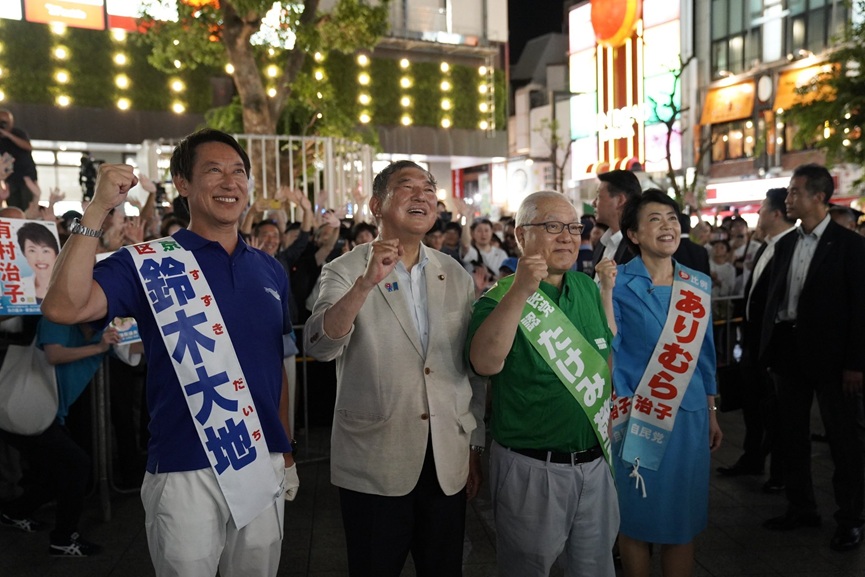Tokyo: Japanese voters cast their ballots on Sunday in a high-stakes upper house election that could reshape the country’s political landscape and weaken Prime Minister Shigeru Ishiba’s hold on power.
Rising consumer prices, an uneasy immigration debate, and growing public frustration have put the ruling Liberal Democratic Party (LDP) and its coalition partner Komeito at risk of losing control of the 248-seat chamber.
According to opinion polls, the coalition may fall short of securing the 50 seats needed to maintain its majority in the upper house, where half the seats are contested. A setback could lead to a period of political uncertainty in the world’s fourth-largest economy and undermine critical trade negotiations with the United States.
The election comes against a backdrop of soaring inflation, with household staples such as rice having doubled in price since last year. The economic pain has been compounded by dissatisfaction over the government’s fiscal stance, as the LDP continues to resist opposition demands for tax cuts and increased welfare spending.
東京都 蒲田駅前にて武見敬三候補・鈴木大地候補の応援に。
両議員が国政において発揮していただける力は、これからの日本に欠かすことができません。
どうかこの激戦の東京選挙区において、両議員とも国政の場に送り出していただきたく、
皆様のお力をいただけますようお願い申し上げます。 pic.twitter.com/3lXFthp7dK— 石破茂 (@shigeruishiba) July 19, 2025
Smaller parties such as Sanseito, which campaign on restricting immigration, limiting foreign capital, and rolling back gender equality initiatives, are gaining traction among young voters.
Meanwhile, the Constitutional Democratic Party of Japan and other opposition forces are attracting support by advocating for more inclusive welfare policies and a shift away from austerity.
The timing is critical; Japan faces an August 1 deadline to conclude a trade agreement with the United States or risk punitive tariffs on key exports. Prime Minister Ishiba is already reeling from the LDP’s worst performance in 15 years during last October’s lower house elections, where his party lost its majority.

























